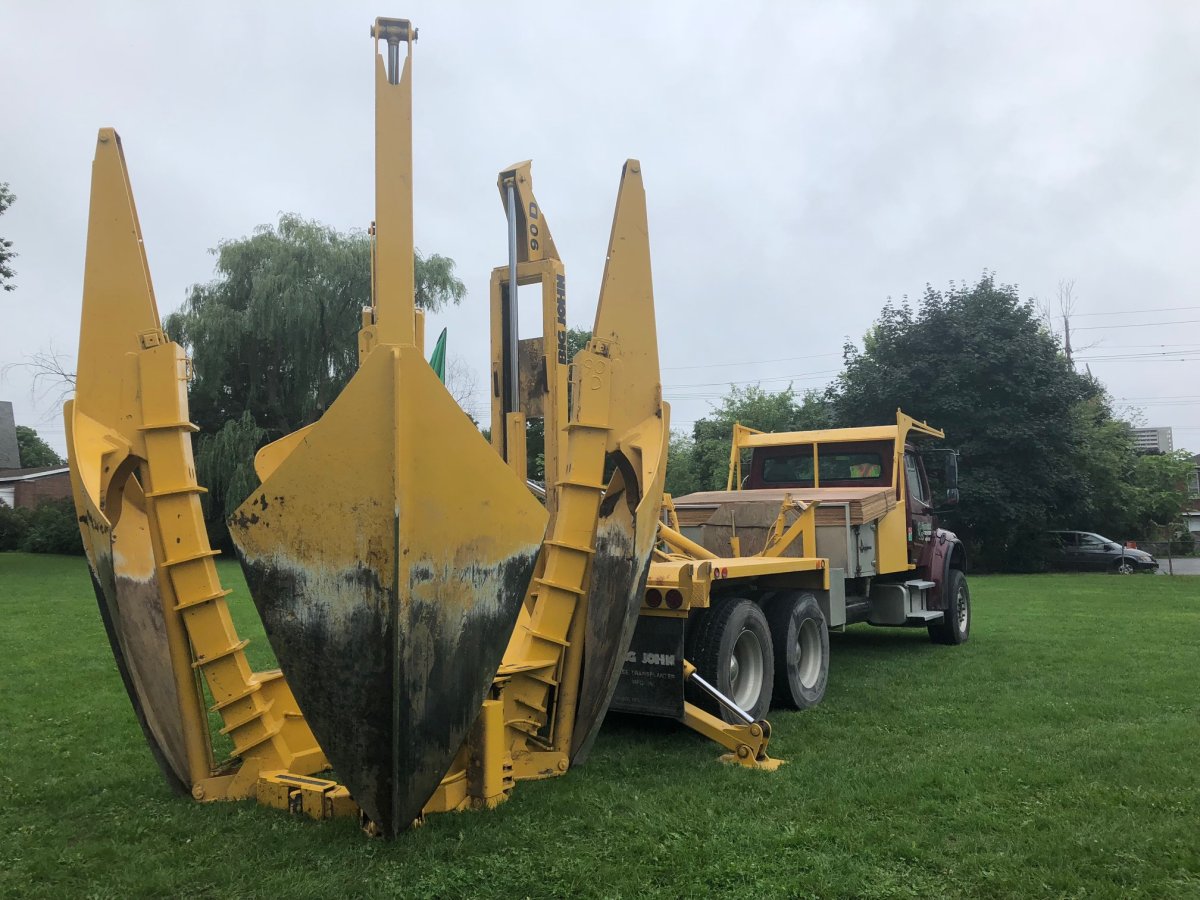A number of trees in Ottawa’s west-end will get axed in the name of the city’s light-rail transit expansion — but the municipality was able to save 50 from that terrible fate thanks to a $25,000 grant.

CN Railway — in partnership with Tree Canada, a national not-for-profit tree planting organization — awarded the City of Ottawa one of 27 grants given out annually through its “EcoConnexions” program for urban greening projects.
That cash helped city planners save 50 trees from the section of Byron Linear Park between Cleary and McEwen avenues, underneath which the future LRT track will travel.
Even though far more trees that fall in the LRT’s path will be clear cut than saved, Ottawa Mayor Jim Watson called the initiative a “win” for the environment and the surrounding communities.
“While we are excited about extending light rail to more residents, we are aware of the impacts of construction,” Watson said. “This grant will help us preserve and increase our tree canopy in the neighbourhood and in Byron Linear Park.”
Ottawa’s not the first city in Canada to give urban tree “transplanting” a go in the face of infrastructure projects. (In fact, the city has uprooted and relocated almost 100 trees within the past year, senior Stage 2 LRT planner Marc Magierowicz said.)
But it’s still rare for this to happen in large municipalities, according to Tree Canada, which supported the city with the project.
The task can be expensive for cash-strapped cities and requires a lot of co-ordination and equipment, including a tree spade machine. The large spades — which sort of resemble a claw — encircle the tree, plunge into the soil, and lift up the entire tree and its roots.
Once the tree is out of the ground, it has to go back in as soon as possible – ideally within the same day so it doesn’t have to be stored.
On top of money and logistics, only certain species are healthy and sturdy enough to handle that kind of a shock, Tree Canada’s operations manager Marie-Paule Godin said.

Get breaking National news
In this case, the group of 50 trees were considered “mature” and included a variety of species — such as pine, pear, birch, maple and oak trees, as well as a large lilac and a cedar.
The size of the tree matters too; if its canopy is too big, the spade machine won’t be able to hold it, said Ken Stevens, president of Manotick Tree Movers, which the city contracted for the job.
Godin said all of the 50 trees were between 10 to 20 years old and between 12 and 15 feet in height.
The trees were all moved within Bay Ward, the city said — mostly to other parks (Woodroffe Park received eight, for example.) But a number of households in the area which asked for a tree got one replanted on their front lawns.
The city has promised not to leave the affected area of Byron Linear Park barren. Once the LRT construction underneath the park has concluded, Watson said, the city will replant smaller trees and shrubs “that have the capacity to grow and survive in that particular area.”
“We won’t be able to have really big trees with big roots like you see there now … but we’ll be able to green that area,” he said.
According to Stevens, it’s generally more expensive to buy and plant new trees than relocate ones that are on the chopping block. But if a tree wouldn’t survive the move or if rocks underground prevent the spades from uprooting it smoothly, you’re basically forced to walk away, he said.
Ottawa’s tree transplant project was a “unique” one for Tree Canada to assist with as well, as the group typically supports municipalities and organizations that want to plant trees, Godin said.
She said they were attracted to the city’s grant application because it was “innovative.”
“The residents of the area can still have all the benefits related to those trees that were removed for the LRT because those trees are still in their communities, Godin said.
“They just moved a small distance away.”





Comments